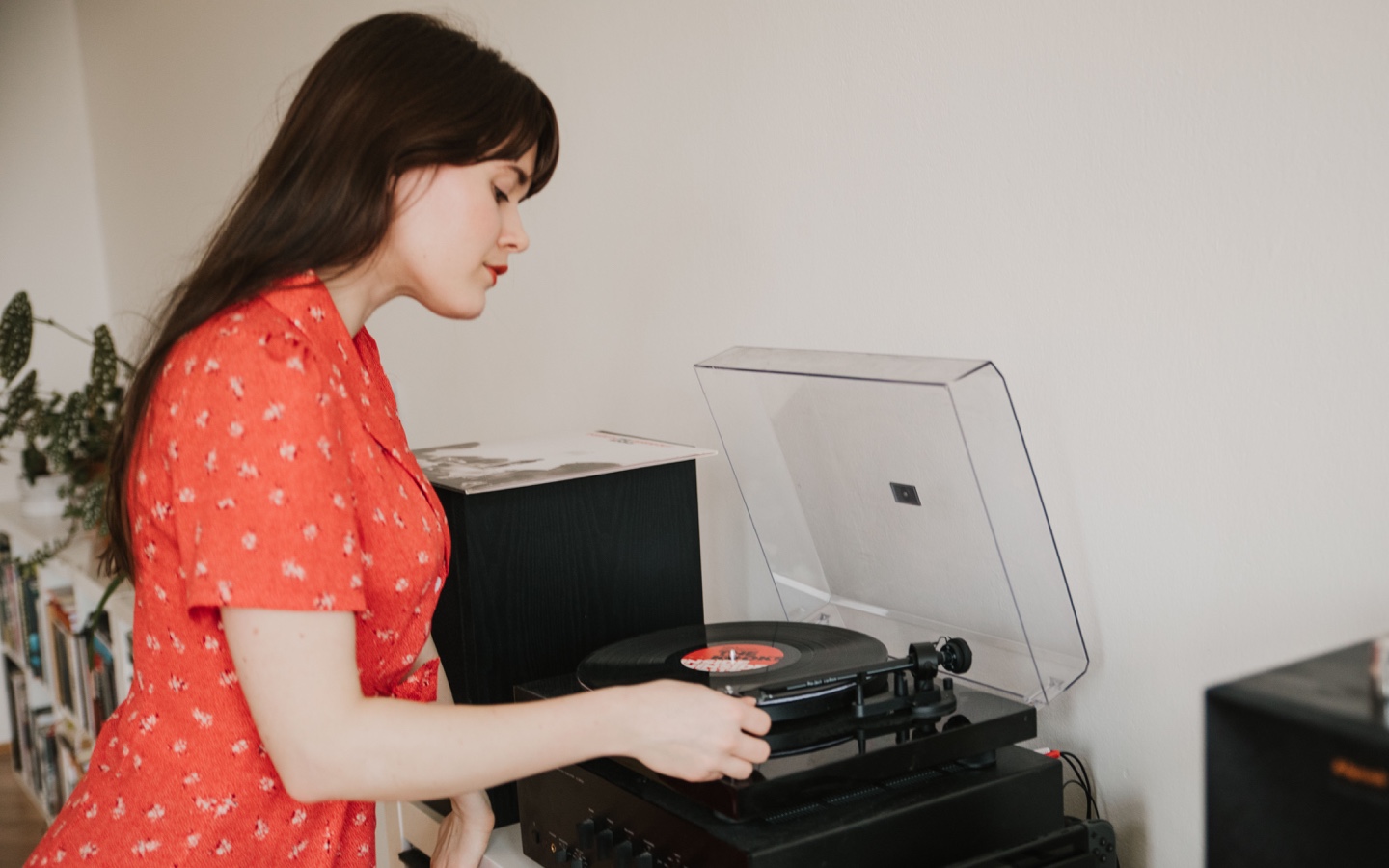After a year at home, daily routines have gone by the wayside. Get back to prioritizing your mental and physical well-being and form healthy habits you can stick with long term.
My bedtime was the first thing to go when I began working from home. Previously the practitioner of a respectable nighttime routine — phone off by 8 p.m., in bed with a book by 9 p.m. — I suddenly couldn’t do it anymore. Instead, I swapped 30 minutes of reading for a steady diet of late-night news, doom-scrolling on Instagram, and frenzied texts to friends.
It makes sense. I, like nearly everyone else in the world at the time, was coming to terms with a global pandemic. I worried about my loved ones, grieved the mounting lives lost to the virus, and felt anxious about the competing information I read online.
Routines typically provide me a sense of security. If I wake up early and break a sweat before work, I’ll be in the right mindset to tackle the day. If I’m in bed by a certain time each night, I’ll get a good night’s sleep. If I limit screen time, I’ll increase my creativity. At the beginning of the pandemic, I depended on these truths. My morning workouts relieved stress. My evening rituals beget easy sleep. Books were a respite from news and texts.
But eventually, these habits broke down.
When I began working from home indefinitely, I no longer had to catch my van pool at 7 a.m. I became free from the constraints of a schedule dictated by Seattle traffic, which meant I didn’t have to get up as early every morning. Then, as in-person interactions became virtually non-existent, I gravitated to the connection of endless news cycles and social media. Gradually, I began straying from the routines that gave my days a sense of order. My type A self loosened the reins. And for a while, it was nice.

I picked up other routines in their stead: Weekly sport climbing at a local crag, evening bike rides along the waterfront, long walks at lunch, a slow morning.
Then, a few months ago, I realized my day to day needed a tune up. My sleep had suffered from both pandemic stress and too much screen time at night. Climbing and cycling kept me fit, but I craved the endorphins of a consistent morning sweat. I wanted to start meditating again.
Good routines are not just for the type A. Your life is the sum of your habits. But according to James Clear, author of Atomic Habits, those daily practices are also who you are: a morning person, a procrastinator, fit, not fit. You are what you repeatedly do.
I’m not here to tell you to start rising before the sun or to set unrealistic goals (hustle porn be damned). We all deserve a mental break from the exhaustion of the past year. But I would argue this: A good routine can make your day easier. It puts the small stuff on autopilot, so you can prioritize things like sleep, movement, and fresh air. And forming good habits doesn’t have to be hard. Here are eight tips to create habits that stick.
James Clear argues that systems are better than goals. He writes that both successful and unsuccessful people have goals. But implementing a system of improvements is what sets people apart and leads to achievement.
In his book, Clear gives the example of a messy room. If your goal is to organize it, he writes, you’ll have a clean room for a while. If you implement systems to keep it clean — putting your clothes directly in a hamper after taking them off, making the bed immediately after waking up each day, vacuuming every Sunday morning — you’ll keep it clean long term. The short of it: Identify your desired outcome. Then create a system of good habits to support it.
When recommitting to a routine, I quickly realized the habits that made sense a year ago no longer applied to my new work-from-home environment. So I got clear on what I wanted — to have more time before work, to break a sweat before checking my email each morning — and worked backward to create habits that supported that.
For instance, I began scheduling my workouts for the week on Sundays right after dinner. I started food prepping immediately after grocery shopping on the weekend, which made lunch creation throughout the week a breeze. These two adjustments easily supported my desire to better prioritize my health. I also began shutting off my phone at the same time every night and limiting which apps I used daily — two decisions that were in line with my intent to quit the doom scrolling before bed.
Read More: 5 Easy Ways to Develop Healthier Online Habits
In his book, Clear provides research-backed ways to form habits that stick. One of my favorites is habit stacking. The idea is you pair a desired habit with one you already have. For instance, if you want to begin meditating every morning, your new habit can be to sit down on your yoga mat for five minutes (new habit) right after you brew your morning coffee (existing habit). The key to making this work is to pair habits you perform with similar frequency. So if you want to meditate daily, don’t pair it with an existing routine, like working out, that you only do four or five days a week.

It’s easy to talk ourselves out of something we don’t really want to do. This becomes even more tempting when that something isn’t clearly defined. Say you want to begin running more often. Well, how often each week do you want to run? How many miles do you want to log? What time of day will you run? Running more often is the goal. Running three miles every Monday, Wednesday, and Friday before 10 a.m. is the habit.
Read More: Get Fit With Minimal Equipment
Want to be a runner? Stop telling people you suck at running. Trying to maintain an exercise routine? Quit with the self-deprecating jokes about your fitness level. To make a habit stick, think of yourself as a person who already does those things: You’re a runner, a fit person.
Clear writes that behind every system of action, there’s a system of beliefs. These beliefs shape the system and influence the outcomes. In his book he provides the example of someone saying no to a cigarette. The person can decline in two ways, either by saying “No, thanks. I’m trying to quit” or “No, thanks. I’m not a smoker.” In the second scenario, the person sees themselves as someone who would never give in to a cigarette. This identity shift cements their new habit: They don’t smoke.
So the next time you try out a new routine, slip on the new identity as well. I am a runner. I am fit. I am a morning person.
Set yourself up for success. If your goal is to begin meditating daily, create a space in your apartment or house for it. Place a sitting pillow in an area you can always go for five minutes of daily quiet time. Create a playlist of guided meditations. Essentially, make it easy to meditate. If you have to fumble online for a guided meditation each morning, you’re less likely to maintain your routine. Make it foolproof.

Read More: 3 Easy Ways to Incorporate Meditation Into Your Day
Just because you miss a day doesn’t mean you have to trash your entire routine. It’s good to check in with yourself to ensure your habits make sense for your goal. Beyond that, you’ll just have to embrace the process.
Clear stresses the importance of continuous improvement. His suggestion is to get one percent better each day. I’ve found this philosophy works well for me. Even on the days I want to scrap my routine, I continue on. I may not bust out the best workout or go on the longest run, but I do something. I go on a short run. I log a 15-minute workout. These small wins support the overall goal.
Fan of visuals? Try a habit tracker. These allow you to list your habits and write out how often you plan to complete them. Then you can put a check mark near each day you’re successful. Seeing your progress on paper can be a major motivator. You can buy physical habit trackers online or download an app.
What healthier habits do you plan to pick up this year? Share it with us on Instagram or Facebook by tagging us @avocadomattress or #avocadogreenmagazine

Shop Pillows
The Essential Organic Pillow Collection
Gentle, breathable, non-toxic support.





